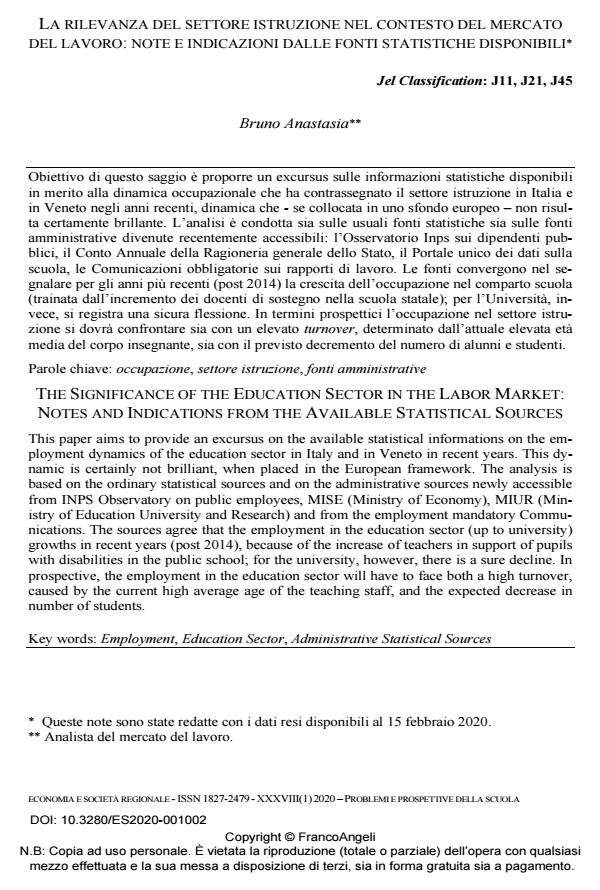The significance of the education sector in the labor market: notes and indications from the available statistical sources
Journal title ECONOMIA E SOCIETÀ REGIONALE
Author/s Bruno Anastasia
Publishing Year 2020 Issue 2020/1
Language Italian Pages 28 P. 14-41 File size 480 KB
DOI 10.3280/ES2020-001002
DOI is like a bar code for intellectual property: to have more infomation
click here
Below, you can see the article first page
If you want to buy this article in PDF format, you can do it, following the instructions to buy download credits

FrancoAngeli is member of Publishers International Linking Association, Inc (PILA), a not-for-profit association which run the CrossRef service enabling links to and from online scholarly content.
This paper aims to provide an excursus on the available statistical informations on the employment dynamics of the education sector in Italy and in Veneto in recent years. This dynamic is certainly not brilliant, when placed in the European framework. The analysis is based on the ordinary statistical sources and on the administrative sources newly accessible from INPS Observatory on public employees, MISE (Ministry of Economy), MIUR (Ministry of Education University and Research) and from the employment mandatory Communications. The sources agree that the employment in the education sector (up to university) growths in recent years (post 2014), because of the increase of teachers in support of pupils with disabilities in the public school; for the university, however, there is a sure decline. In prospective, the employment in the education sector will have to face both a high turnover, caused by the current high average age of the teaching staff, and the expected decrease in number of students.
Keywords: Employment, Education Sector, Administrative Statistical Sources
Jel codes: J11, J21, J45
Bruno Anastasia, La rilevanza del settore istruzione nel contesto del mercato del lavoro: note e indicazioni dalle fonti statistiche disponibili in "ECONOMIA E SOCIETÀ REGIONALE " 1/2020, pp 14-41, DOI: 10.3280/ES2020-001002